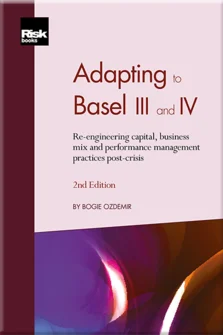Evolution of Economic Capital Measurement and Management
Introduction
Environmental Forces: Economic Instability, Low Interest Rates, Change in Demographics, Continuing Regulatory Changes and Digital Evolution
Current Practices and their Shortcomings in Risk, Capital, Business-mix and Performance Management
Evolution of Economic Capital Measurement and Management
Integrated Capital Management: ICAAP and ORSA
Procyclicality Management: Developing a Coherent Risk Rating Framework for Risk Management, Capital Management, Stress Testing and IFRS 9 Purposes
Capital Optimisation and Business-mix Management
Performance, Profitability Management and Hurdle Rate
Optimal Management of the Interest Rate Risk in the Banking Book
Prudent LGD Estimation for Mortgages
Developing and Implementing Effective Fintech Strategies
Implementing IFRS 9 by Adapting AIRB Models
Organisational (Re)alignment
This chapter is dedicated to a discussion of economic capital, and begins with the evolution of economic capital measurement and management in banks. Although EC has been an established risk metric in banks with known benefits, its usage is being marginalised as an unintended consequence of Basel III. Later in the chapter, we will demonstrate a methodology to estimate EC for defaulted loans that is important in the post-crisis era, with many banks holding large impaired credit portfolios. We then turn our attention to insurance companies, where EC is a much newer and a more complicated concept, and examine what EC represents in the presence of policyholders. We will then discuss how EC can be estimated for market risk (in comparison to banks): the one-year VaR approach versus the run-off approach. We will also explore how to quantify the potential benefits from hedging. Finally, we consider the use of EC in pricing, followed by a look at EC-based profitability estimation.
ECONOMIC CAPITAL IN BANKS
EC methodologies have been long-established and well-documented for banks. Our main focus in this chapter is on the evolution of EC as a risk and capital management measure. We will
Copyright Infopro Digital Limited. All rights reserved.
You may share this content using our article tools. Printing this content is for the sole use of the Authorised User (named subscriber), as outlined in our terms and conditions - https://www.infopro-insight.com/terms-conditions/insight-subscriptions/
If you would like to purchase additional rights please email info@risk.net
Copyright Infopro Digital Limited. All rights reserved.
You may share this content using our article tools. Copying this content is for the sole use of the Authorised User (named subscriber), as outlined in our terms and conditions - https://www.infopro-insight.com/terms-conditions/insight-subscriptions/
If you would like to purchase additional rights please email info@risk.net






